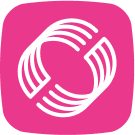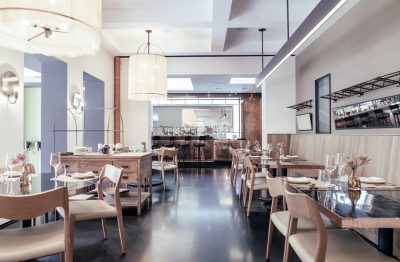Running a restaurant isn’t for the faint of heart — especially with the current litany of industry challenges. Labor costs are through the roof, profit margins keep shrinking, tariffs are increasing uncertainty, and customers want more for less. But savvy operators know that the right restaurant software can turn these obstacles into strategic advantages. In 2025, a growing focus on back-office technology over front-of-house tools is poised to reshape the industry.
Still, many operators are stuck in the past and relying on outdated manual processes. As the gap widens between technology-forward restaurants and those clinging to tradition, the need to modernize has never been more urgent.
What Is Restaurant Software?
Restaurant software refers to digital tools built specifically to manage the complexities of foodservice operations. Unlike generic business software, these systems are designed to address industry-specific challenges, including fluctuating food costs, tip calculations, health code compliance, and seasonal menu shifts.
In the past, “restaurant software” was often synonymous with “point-of-sale system.” Today, it’s evolved into a comprehensive platform that integrates everything from inventory tracking and payroll to customer management and financial reporting. When connected, these tools create a unified ecosystem that streamlines operations, reduces manual data entry, and delivers real-time insights to support faster, smarter decision-making.

Types of Restaurant Software
Restaurant Accounting Software
Financial management is the backbone of a successful restaurant. Restaurant accounting software addresses financial aspects unique to the foodservice industry such as tracking multiple revenue streams, managing tip allocations, and calculating food costs.
Restaurant Bookkeeping Software
Bookkeeping software handles daily financial transactions. Think invoicing, cash management, and tracking expenses across multiple categories and locations.
Food Cost Management Software
Food costs in successful restaurants are typically 28-35% of sales, which makes precise cost management essential. This software tracks ingredient usage, monitors waste, and calculates recipe costs in real-time as supplier prices fluctuate.
Inventory Management Software
Inventory software tracks stock levels, predicts demand patterns, and automates reordering to prevent both stockouts and overordering, both of which directly impact food costs and operational efficiency.
Table Reservation and Booking Software
Reservation management software optimizes table turnover and helps operators manage reservations across multiple channels. Additionally, it enhances the guest experience by tracking customer preferences.
Accounts Payable Automation Software
Accounts payable software digitizes and automates time-consuming office processes like invoice processing, approval workflows, and payments.
Employee Payroll Software
Restaurant payroll goes beyond tracking hourly wages. Specialized software handles tip reporting, overtime calculations, different minimum wage rates for tipped employees, and compliance with changing labor regulations.
Point of Sale (POS) Systems
Modern POS systems don’t just process transactions, they collect valuable data about sales patterns, customer preferences, and staff performance across multiple locations.
Online Ordering Software
With the rise of off-premise dining, online ordering platforms that manage orders from multiple channels, while maintaining menu consistency and inventory accuracy, have become essential.
Customer Relationship Management (CRM) Tools
Restaurant CRM systems track customer interactions, purchase history, and preferences to identify high-value customers and activate personalized marketing.
Kitchen Display Systems (KDS)
KDS platforms replace paper tickets with digital screens and have several benefits such as improved order accuracy and kitchen efficiency, and the ability to coordinate between stations and track prep times.
Review Management Platforms
These tools monitor reviews across multiple platforms and alert management to new feedback. Maintaining a positive online reputation can significantly impact restaurant success.
Key Features to Look For in Restaurant Software
Restaurant operations demand immediate access to critical information. Real-time data capabilities, which empower operators to monitor sales trends, track inventory levels, and identify operational issues as they occur, are critical.
Restaurant software should work together seamlessly to prevent data silos and ensure consistency across platforms. Look for software that offers pre-built integrations with popular restaurant technology providers.
Software adoption depends on ease of use. In the age of touch screens, digital tools should have intuitive interfaces that reduce training time and errors. Cloud-based systems with mobile access let management oversee the restaurant from anywhere while ensuring data stays updated across devices and locations, which is a must-have for multi-unit operators.
Because restaurant software handles sensitive information such as employee data and financial transactions, robust security measures are essential. Compliance with industry standards for payment processing should be built into the platform.
Benefits of Using Restaurant Software
With good restaurant software, information flows seamlessly. Everything is connected, from taking orders to tracking inventory. Software can track what a restaurant is using in real-time, so you can order exactly what you need, when you need it. Modern reporting also shows which menu items make the most money, when you need more staff, and where you could cut costs. These insights help operators make data-backed decisions instead of relying on gut instincts.
Managing staff also becomes much simpler with the right tools. Software can automatically create schedules based on how busy you expect to be, track who’s performing well, and allow employees swap shifts or request time off without excess hassle and paperwork.
Less time spent on paperwork means more time for work that actually drives revenue. Automation handles the tedious tasks of running a restaurant so you can focus on what matters: making good food, building relationships with customers, and growing your business.

How to Choose the Right Restaurant Management Software
Step one is identifying the specific challenges your restaurant faces and the desired outcome.
When evaluating software options, consider the business size, operational complexity, and growth plans. You’ll also want to weigh upfront costs and ongoing expenses, including training and ongoing support. Remember: the lowest-cost option may not provide the best value if it lacks critical features.

Look for providers with restaurant industry experience who understand operational challenges that are specific to the foodservice industry. Research customer reviews and speak with current users to understand real-world experiences with the software and provider. Verify providers maintain appropriate security certifications and follow industry best practices for data protection.
Once you have a short list of potential providers, schedule demos where you can address actual operational scenarios with team members who will use the system most often.
Upgrade Your Restaurant Software Now
Running a restaurant has never been more challenging. Costs are up, good employees are hard to find, and customers expect perfection both on- and off-premise. While these problems aren’t going away, restaurant software can make managing them much easier.
Every day spent managing operations manually gives competitors using integrated software a growing advantage that becomes harder to close over time. Your restaurant’s success depends on the ability to make informed decisions quickly and optimize all aspects of operation. The right restaurant management software provides the foundation for both.
Ready to transform your restaurant operations? Book a personalized demo today and discover how Back Office’s comprehensive restaurant management platform can streamline your operations and boost profitability.




